#Kanchenjunga Base Camp Trekking
Explore tagged Tumblr posts
Text
Kanchenjunga Base Camp Trekking Guide

Explore the Kanchenjunga Base Camp Trek with our comprehensive guide for an amazing Himalayan trekking journey.
For more info: https://www.beyondthelimitstreks.com/kanchenjunga-trek
#KanchenjungaBaseCampTrekking
0 notes
Text
Exploring Nepal's Hidden Gems: Unforgettable Trekking Adventures
Nepal, a country renowned for its breathtaking landscapes and rich cultural heritage, offers a plethora of trekking opportunities for adventurers of all levels. From the towering peaks of the Himalayas to the verdant valleys and remote villages, Nepal's diverse terrain beckons explorers to embark on unforgettable journeys. Among the myriad of trekking options, four standout destinations promise to captivate the imagination and stir the soul: the Annapurna Base Camp Short Trek, Kanchenjunga Base Camp Trekking, Tsum Valley and Manaslu Trek, and the iconic Manaslu Circuit Trek.
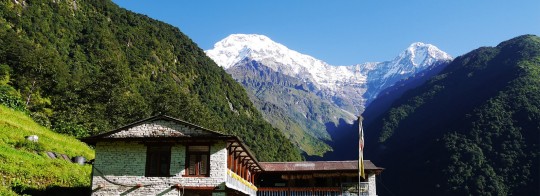
Annapurna Base Camp Short Trek: Perfect for those with limited time yet a desire to experience the splendor of the Himalayas, the Annapurna Base Camp Short Trek offers a condensed but no less spectacular version of its longer counterpart. Trekkers are treated to awe-inspiring views of the Annapurna range, passing through lush rhododendron forests, terraced hillsides, and charming Gurung villages along the way.
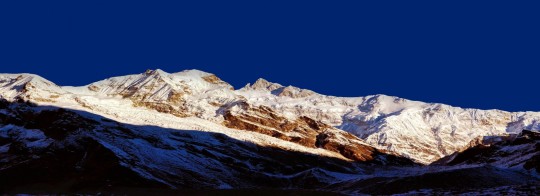
Kanchenjunga Base Camp Trekking: For those seeking an off-the-beaten-path adventure, the Kanchenjunga Base Camp Trekking offers a remote and pristine wilderness experience. Trekking through the rugged terrain of eastern Nepal, adventurers are rewarded with panoramic views of the world's third highest peak, Kanchenjunga, as well as encounters with diverse ethnic communities and abundant wildlife.

Tsum Valley and Manaslu Trek: Nestled in the shadow of the towering Manaslu massif, the Tsum Valley and Manaslu Trek is a hidden gem waiting to be discovered. This culturally rich and spiritually profound journey takes trekkers through remote Tibetan villages, ancient monasteries, and sacred pilgrimage sites, offering a glimpse into a way of life unchanged by time.
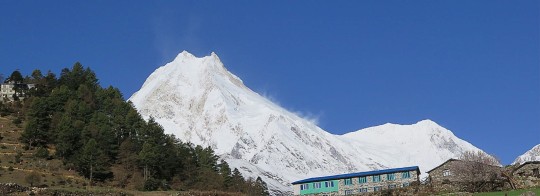
Manaslu Circuit Trek: Dubbed as one of Nepal's best-kept secrets, the Manaslu Circuit Trek is a challenging yet rewarding adventure that circumnavigates the towering peak of Mount Manaslu. Trekkers traverse high mountain passes, cascading waterfalls, and pristine alpine forests, all while immersing themselves in the rich cultural tapestry of the region.
Each of these trekking adventures promises an unforgettable experience, whether it's the awe-inspiring beauty of the Annapurna range, the remote wilderness of Kanchenjunga, the spiritual tranquility of Tsum Valley, or the rugged grandeur of the Manaslu Circuit. As trekkers lace up their boots and set out into the Himalayan wilderness, they embark on a journey of discovery, forging connections with nature, culture, and fellow adventurers that will last a lifetime. In Nepal, the possibilities are endless, and the adventure begins with each step taken into the heart of the Himalayas.
#Annapurna Base Camp Short Trek#Kanchenjunga Base Camp Trekking#Tsum Valley and Manaslu Trek#Manaslu Circuit Trek
0 notes
Text

Nepal is home to some of the world’s most beautiful and challenging trekking routes, offering a mix of stunning landscapes, rich culture, and breathtaking mountain views. Here are the top 10 trekking routes in Nepal for 2025 adventure ✨️ ♥️
1️⃣. Everest Base Camp Trek: This iconic trek takes you to the base camp of Mount Everest, offering stunning views of the world's highest peak, as well as surrounding peaks like Lhotse and Nuptse.
2️⃣. Annapurna Circuit Trek: Known for its diverse landscapes, this trek offers panoramic views of the Annapurna and Dhaulagiri mountain ranges.
3️⃣. Langtang Valley Trek: This trek takes you through the scenic Langtang Valley, surrounded by stunning peaks like Langtang Lirung.
4️⃣. Ghorepani Poon Hill Trek: A shorter, easy trek, it offers breathtaking views of the Annapurna and Dhaulagiri ranges.
5️⃣. Mardi Himal Trek: A relatively short and less crowded trek, the Mardi Himal trek provides stunning views of Machapuchare, Annapurna South, and Mardi Himal.
6️⃣. Manaslu Circuit Trek: This remote and rugged trek takes you around Mount Manaslu, the eighth-highest peak in the world. It offers beautiful mountain views and a challenging pass (Larkya Pass).
7️⃣. Upper Mustang Trek: Trekking in the "forbidden kingdom" of Mustang, this route offers a unique blend of Tibetan culture, desert-like landscapes, and ancient monasteries.
8️⃣. Kanchenjunga Base Camp Trek: This challenging trek takes you to the base of Kanchenjunga, the third-highest mountain in the world.
9️⃣. Rara Lake Trek: Located in western Nepal, this trek takes you to Rara Lake, the largest lake in Nepal, surrounded by snow-capped mountains.
🔟. Tsum Valley Trek: Tucked away in a hidden valley, this trek offers an off-the-beaten-path experience. The valley is rich in Tibetan Buddhist culture with ancient monasteries, stupas, and stunning views of the Ganesh Himal and Sringi Himal ranges.
__________
Book your seat now:
WhatsApp : +977 9869836541
#top 10 trekking routes#trekking#trending destinations#annapurna#everest#everest base camp trek#annapurna circuit#annapurna circuit trek#langtang valley#langtang valley trek#mardi himal trek#manaslu circuit#manaslu circuit trek#kanchenjunga base camp trek#kanchenjunga base camp#eastern nepal#trekking in nepal#nepal
2 notes
·
View notes
Text
Is Kanchenjunga Safe for Solo Trekkers in 2025? A Complete Guide
If you’re an adventurous soul dreaming of exploring the remote trails of eastern Nepal, the Kanchenjunga Trek might be on your radar. Towering at 8,586 meters, Mount Kanchenjunga is the third-highest mountain in the world, and the trek to its base camps is one of Nepal’s most scenic and untouched journeys. But if you’re considering going solo, one question naturally arises: Is Kanchenjunga safe for solo trekkers in 2025?
In this blog, we’ll walk you through everything you need to know—from safety and regulations to terrain, logistics, and what has changed in recent years. Whether you’re an experienced trekker or a passionate solo adventurer, here’s your 2025 guide to trekking solo to Kanchenjunga.
Why Kanchenjunga Attracts Solo Trekkers
Kanchenjunga is a dream for trekkers who love raw, wild nature and minimal crowds. Unlike Everest or Annapurna, this region remains largely untouched. The trail takes you through remote villages, alpine forests, glacial rivers, and offers breathtaking views of the Kanchenjunga massif.

Is Solo Trekking Permitted in Kanchenjunga?
As of 2025, solo trekking in the Kanchenjunga region is not permitted without a licensed guide. This is due to both safety and conservation concerns. The region lies within the Kanchenjunga Conservation Area, a protected zone, and special permits are required to trek here. These permits can only be obtained through a registered trekking agency and must include a licensed guide and at least two trekkers per group (including you).
So technically, you cannot trek truly solo in Kanchenjunga like you might in the Annapurna region. However, if you’re a solo traveler, you can still join a small group or hire a guide, which fulfills the regulation while giving you space to explore independently during the day.
Safety Concerns for Solo Trekkers
Even if you could trek solo, Kanchenjunga is not ideal for true solo trekking, especially for first-timers. Here’s why:
Remote and Rugged Terrain: The trails are challenging, often isolated, and prone to landslides or weather disruptions.
Limited Infrastructure: Unlike Everest or Annapurna, teahouses are sparse, and medical help is virtually nonexistent in higher altitudes.
Unstable Weather: Snowfall, rain, and poor trail conditions can quickly change your plans, and without support, you might be stranded.
Navigation Challenges: Some parts of the trail are poorly marked, especially around high passes and forested areas.
With a guide, these risks are drastically minimized. Guides know the terrain, can help in emergencies, and also offer cultural insights that enrich your journey.
Permits and Requirements for 2025
To trek to Kanchenjunga Base Camp (North or South), you’ll need:
Restricted Area Permit (RAP) – Issued only through a registered trekking agency.
Kanchenjunga Conservation Area Permit (KCAP)
Licensed Guide and at Least One Companion – Mandatory.
The permits must be checked at various checkpoints, and traveling without them (or alone) can lead to fines or expulsion from the trail.
What’s the Trekking Experience Like?
The Kanchenjunga trek usually takes about 18 to 25 days, depending on whether you’re doing the North Base Camp, South Base Camp, or the combined circuit. You’ll pass through beautiful Sherpa, Rai, and Limbu villages and stay in basic teahouses or homestays. Expect longer trekking hours, steep ascents, and remote trails that go days without seeing another tourist.
It’s not a beginner’s trek—you should have high-altitude experience and good physical fitness. Altitude sickness is also a serious concern, as you’ll reach over 5,000 meters.
Why Hiring a Guide is Actually Beneficial
While it may seem like a compromise to trek with a guide, in Kanchenjunga, it’s actually a bonus:
Better safety and first aid knowledge
Help with translation and cultural interactions
Route knowledge and flexibility during bad weather
Support with food, lodging, and logistics
Plus, by hiring a local guide or porter, you support the local economy, which is still recovering from the pandemic and regional instability.
Tips for Solo Travelers Planning a Kanchenjunga Trek
Join a group trek organized by an agency to meet other solo adventurers.
Use a reputable trekking company to manage permits and logistics.
Train in advance – this is a strenuous trek with long days and tough climbs.
Get insurance that covers high-altitude trekking and helicopter rescue.
Pack wisely, including cold-weather gear, water purification tools, and first aid.
Final Verdict: Is Kanchenjunga Safe for Solo Trekkers in 2025?
The Kanchenjunga region is not legally or practically suited for solo trekkers. Due to its remoteness, permit requirements, and challenging terrain, trekking with a guide is not just required—it’s highly recommended. But don’t let that deter you! If you’re a solo traveler at heart, joining a small guided group or hiring a personal guide still gives you the freedom to explore, with the added benefit of safety, cultural insight, and logistical ease.
In 2025, the region is open and welcoming to adventurers—just not alone. So lace up your boots, find a guide you trust, and prepare to experience one of Nepal’s most breathtaking and untamed trails.
#trekking#trekking in nepal#nepal#kanchenjunga base camp trek#treknepal#bluemarbleadventure#everestdreams#nepaltrekking
0 notes
Text
Never Go to Kanchenjunga Ever
Let’s cut to the chase: if you’re someone who loves the warm embrace of Wi-Fi, prefers their mountains on desktop wallpapers, and considers a 15-minute walk to Starbucks an “adventure,” then the Kanchenjunga Trek is your worst nightmare. Don’t let the stunning photos fool you — it’s a trap. A scenic, life-changing, soul-nourishing trap. And who needs that kind of positivity?
Already Seen Wallpaper like Views
First off, let’s talk about the views. The Kanchenjunga region, nestled in the far reaches of eastern Nepal, is obscenely beautiful. Picture this: glacial valleys, waterfalls cascading from heights that would make your Instagram weep, and the third-highest mountain in the world looming like a snow-draped deity in every direction. Ugh. Just disgusting how awe-inspiring it all is. Who has time to be moved emotionally by nature? You came here to be annoyed, not spiritually awakened.
The Unwanted Fresh Air
And then there’s the fresh air. Be warned: the air is so pure, so oxygen-rich (well, until you’re at 5,000m and gasping), that your lungs might actually start functioning at a higher capacity. Can you imagine the horror of your city-dwelling body adapting to cleanliness? You might start craving trees. Worse — you might want to recycle.
The local’s un-neccesary love
Let’s not forget the locals. Kind, generous, smiling people who greet you with “Namaste” like it’s some sort of sacred cultural tradition or something. They’ll probably offer you tea, a place to sit, or deeply humbling life wisdom wrapped in casual conversation. The nerve. Can you believe these people, living simple lives filled with community and meaning? Next thing you know, you’ll be reevaluating your consumerist lifestyle and regretting every Amazon purchase from the past decade.
Boring Local Foods
The food is another reason to stay away. Dal Bhat power, 24 hour? No thank you. Why settle for hearty, home-cooked lentils, rice, and vegetables that nourish your soul, when you could be eating another sad desk salad or a week-old Taco Bell crunchwrap? And don’t even get started on the yak cheese — it’s suspiciously delicious. Is it even legal to enjoy dairy that much?
Hardest Trek Route
Now, about the physical activity. It’s outrageous. You’ll walk for hours — willingly — up ancient stone paths, through rhododendron forests, across swinging suspension bridges that look like something out of an Indiana Jones film. Worst of all, your body might accidentally get fit. Your legs might become strong. Your endurance might increase. Do you really want to go back to your office job with glowing skin, sharpened lungs, and the annoying satisfaction of knowing you accomplished something epic? Didn’t think so.
Fully Raw: No wifi, No 5 star
Speaking of epic, the Kanchenjunga trek is not commercialized. That’s right — there are no Starbucks, no Wi-Fi towers disguised as trees, and very few influencers blocking your view with their drone shots. How are you supposed to survive without a soy latte or uploading your every step to TikTok? You’re telling me I have to — gasp — live in the moment? That’s too radical.
Change you will feel
And beware: this trek might actually change you. The sheer scale of the mountains can make you feel small in a good way, like maybe your spreadsheets and email chains aren’t the pinnacle of human existence. The silence up there? It’s deafening. No traffic, no pings, no ads. Just you, your thoughts, and the sound of boots crunching snow. People have been known to experience terrifying things like peace and self-realization. Gross.
Weather
Also, the weather? Predictably unpredictable. It’s the Himalayas. One minute it’s sunny, the next you’re inside a cloud. You’ll freeze, then sweat, then freeze again. It’s like the mountain wants you to suffer into personal growth or something. Who do these peaks think they are — therapists?
Poor road for you atleast
Let’s talk logistics. The trek takes about 18 to 25 days. That’s weeks of being away from emails, Zoom calls, and doomscrolling. You’ll return to civilization with fewer notifications and more perspective — how dare you. No one likes a well-balanced, emotionally refreshed person with a renewed appreciation for life. They’re insufferable.
And the final insult? The sense of community. Fellow trekkers, porters, guides — everyone starts feeling like a family by day four. You’ll swap stories, share water, laugh over blisters, and maybe even cry a little when you reach Pangpema Base Camp together. Gross, heartfelt stuff. You don’t need those kinds of connections. Better to stay home and argue with strangers on Reddit.
In conclusion, avoid the Kanchenjunga Trek at all costs. It’s too beautiful, too real, and far too likely to make you a better person. You might return with a twinkle in your eye, a stronger body, and a deeper appreciation for the world. And who has time for that kind of nonsense?
Stay safe. Stay cynical. Stay home. More: Larke Pass Trekking | Langtang Valley Trek | Annapurna Base Camp Trek
0 notes
Text
Kanchenjunga North Base Camp Trek Guide: Remote Trails and Towering Peaks

The Kanchenjunga North Base Camp Trek is one of Nepal’s most remote and spectacular journeys. Leading to the base of the world’s third-highest mountain, Mount Kanchenjunga (8,586m), this trek offers pristine landscapes, alpine wilderness, and deep cultural encounters in far-eastern Nepal.
Why Trek to Kanchenjunga North Base Camp?
Untouched Trails: One of Nepal’s least crowded treks, perfect for solitude and adventure.
Incredible Mountain Scenery: Up-close views of Kanchenjunga, Jannu, and other towering peaks.
Diverse Landscapes: Lush forests, wild rivers, high-altitude glaciers, and yak pastures.
Rich Culture: Encounter traditional Limbu and Rai communities, along with Tibetan Buddhist influences.
Suggested Itinerary (15–17 Days)
Day 1: Flight from Kathmandu to Bhadrapur, drive to Taplejung Day 2–6: Trek through Sekathum, Amjilosa, Gyabla, and Ghunsa Day 7–9: Trek to Khambachen and reach Pangpema (Kanchenjunga North Base Camp) Day 10–12: Return trek via the same route to Ghunsa Day 13–15: Hike back to Taplejung and drive/fly to Kathmandu
This route can also be combined with the South Base Camp trek for a full Kanchenjunga circuit.
Important Trekking Tips
Permit Required: You’ll need a Restricted Area Permit (RAP), Kanchenjunga Conservation Area Permit (KCAP), and a registered guide.
Guide Mandatory: Solo trekking is not allowed in this region.
Best Season: Spring (March to May) and autumn (late September to November) offer stable weather and clear views.
Physical Demands: This is a challenging trek with long walking days and high altitudes—good fitness and prior trekking experience are recommended.
Pack Well: This remote route has limited facilities, so be well-prepared with proper gear, snacks, and medicine.
Final Thoughts
The Kanchenjunga North Base Camp Trek is a raw and rewarding Himalayan adventure. Ideal for seasoned trekkers, it takes you deep into some of Nepal’s wildest and most beautiful terrain. For those willing to go the extra mile, this trek offers unmatched solitude and a close encounter with one of the world’s greatest mountains.
0 notes
Text
Kanchanjunga Base Camp Trek: An Unforgettable Himalayan Adventure
Introduction: A Journey to the World’s Third Highest Peak The Himalayas are home to some of the most beautiful and tallest mountains in the world. One of these is Kanchenjunga, which stands at 8,586 meters, making it the third-highest mountain on Earth. The Kanchanjunga Base Camp Trek takes trekkers to the foot of this majestic peak. This trek is perfect for people who want to experience a remote, peaceful part of Nepal, away from the crowds of other popular treks like Everest Base Camp or Annapurna Circuit.

Why Choose the Kanchanjunga Base Camp Trek? The Kanchanjunga Base Camp Trek is special because it offers stunning views of the Kanchenjunga mountain range and the surrounding peaks. Unlike other famous treks, this route is less crowded, so trekkers can enjoy the natural beauty and peaceful atmosphere of the region. Along the way, you’ll pass through small villages, lush forests, and high-altitude meadows, giving you a chance to experience both nature and culture.
The Journey Begins: Starting the Trek Your adventure starts with a flight from Kathmandu, the capital of Nepal, to Suketar, a small town in the Taplejung District. From Suketar, the trek begins, and you will walk through beautiful forests filled with rhododendron trees. The path takes you across rivers and through villages where you can see the daily life of the people who live in this region. As you walk higher, you’ll see stunning views of snow-capped mountains in the distance.
Climbing Higher: Reaching Kanchenjunga Base Camp The trek to Kanchenjunga Base Camp is a challenging but rewarding experience. As you climb higher, the views get even more spectacular. You will see towering peaks like Kanchenjunga and Makalu in the distance, while also walking through glaciers and alpine meadows. The journey is tough, but when you reach the Kanchenjunga Base Camp, the view of the mountain will take your breath away. It’s an unforgettable moment standing at the foot of such a massive peak!
Discovering Nature and Wildlife Along the Kanchanjunga Base Camp Trek, you’ll experience some of the most diverse and beautiful landscapes in the Himalayas. The trek takes you through forests filled with wildlife, including the elusive red panda and snow leopards. As you go higher, you’ll walk through alpine meadows and see stunning glaciers. The beauty of the natural world in this region is unlike any other trek in Nepal, making it a dream come true for nature lovers.
Cultural Experience: Meet the Locals One of the highlights of the Kanchanjunga Base Camp Trek is the chance to experience the culture of the local people. Along the way, you’ll pass through villages where people from different communities like the Rai, Limbu, and Sherpa live. These people have rich traditions and a deep connection to the mountains. You’ll get to visit old monasteries, and sometimes, the locals will share stories and traditions that have been passed down through generations.
When is the Best Time to Trek? The best time to do the Kanchanjunga Base Camp Trek is during the spring (March to May) and autumn (September to November). These seasons have clear skies and comfortable weather, making it easier to enjoy the stunning views. While winter can also be beautiful, it can be much colder, and the snow may make trekking more difficult.
Conclusion: A Journey You Will Never Forget The Kanchanjunga Base Camp Trek is an adventure like no other. It takes you to a peaceful part of the Himalayas, where you can enjoy breathtaking views of mountains, experience beautiful landscapes, and learn about local cultures. If you’re looking for a trek that offers both challenge and beauty, the Kanchanjunga Base Camp Trek should be at the top of your list!
0 notes
Text
Kanchenjunga Trek: An Unforgettable Himalayan Adventure
Introduction
The Kanchenjunga Trek is one of the most spectacular and least-explored trekking routes in Nepal, offering a unique experience for adventure seekers. With breathtaking views of Kanchenjunga, the world’s third-highest mountain (8,586 meters), this trek takes you through remote villages, pristine forests, and high-altitude landscapes. Unlike the more commercialized trekking routes like Everest and Annapurna, Kanchenjunga remains a hidden gem, promising solitude and a deep connection with nature.
This article will serve as your ultimate guide to the Kanchenjunga Trek, covering everything from route details, difficulty level, best seasons, and essential trekking tips.
1. Overview of Kanchenjunga Trek
Where is Kanchenjunga?
Kanchenjunga lies in the eastern Himalayas, straddling Nepal and India (Sikkim). The trek takes place in Nepal’s Kanchenjunga Conservation Area, a region known for its incredible biodiversity and remote mountain trails.
Why Choose the Kanchenjunga Trek?
Unspoiled and remote trekking trails
Stunning views of Kanchenjunga and surrounding peaks
Rich cultural experience with Limbu and Sherpa communities
Unique flora and fauna, including red pandas and snow leopards
2. Trekking Routes and Itinerary
There are two main trekking routes in the Kanchenjunga region:
Kanchenjunga North Base Camp Trek – Leads to Pangpema (5,143m), the best viewpoint for Kanchenjunga.
Kanchenjunga South Base Camp Trek – Leads to Oktang (4,730m), offering closer views of the southern face of Kanchenjunga.
Standard Itinerary (North & South Base Camps Combined – 21 Days)
DayDestinationAltitude (m)1Fly to Bhadrapur, drive to Taplejung1,8202Trek to Mitlung9213Trek to Chirwa1,2704Trek to Sekathum1,6605Trek to Amjilosa2,5106Trek to Gyabla2,7307Trek to Ghunsa3,5958Acclimatization day in Ghunsa3,5959Trek to Kambachen4,05010Trek to Lhonak4,78011Trek to Pangpema (North Base Camp) and back to Lhonak5,14312Return to Ghunsa3,59513Trek to Sele La Pass4,29014Trek to Tseram3,87015Trek to Oktang (South Base Camp) and back to Tseram4,73016Trek to Tortong2,99517Trek to Yamphudin2,08018Trek to Khebang1,91019Trek to Taplejung1,82020Drive to Bhadrapur-21Fly back to Kathmandu-
3. Difficulty Level and Physical Preparation
Is Kanchenjunga Trek Difficult?
Yes, the Kanchenjunga Trek is considered a challenging trek due to:
High altitude: Up to 5,143m at North Base Camp
Remote trails: Fewer facilities compared to Everest or Annapurna
Long duration: Takes around 21 days to complete

How to Prepare?
Cardio training (running, cycling, swimming)
Strength training (leg and core workouts)
Altitude training (hiking at higher elevations before the trek)
4. Best Time for Kanchenjunga Trek
SeasonTemperatureProsConsSpring (Mar-May)ModerateClear skies, blooming rhododendronsCan be busyAutumn (Sep-Nov)CoolBest mountain viewsCold nightsWinter (Dec-Feb)Very coldFewer trekkers, snow-covered trailsHarsh weatherMonsoon (Jun-Aug)WarmLush landscapesRisk of landslides
Best time: Spring (March-May) & Autumn (September-November).
5. Permits and Regulations
To trek in the Kanchenjunga Conservation Area, you’ll need:
Restricted Area Permit (RAP): $20 per week per person
Kanchenjunga Conservation Area Permit (KCAP): $30 per person
Trekking with a Guide: Required due to remote location
6. Accommodation and Food
Where Do You Stay?
Tea Houses: Basic lodges with meals, common in villages
Camping: Required in some remote areas
Food Options
Dal Bhat (Rice & Lentils) – Most common meal
Noodles, Pasta, and Soup – Available in tea houses
Local delicacies like Yak Cheese and Momos
7. Essential Packing List
Clothing
Thermal base layers, insulated jacket, waterproof shell
Trekking boots, gloves, hat, sunglasses
Gear & Equipment
Sleeping bag (-20°C recommended)
Trekking poles, headlamp, water purification tablets
8. Wildlife and Culture on the Trek
Wildlife
Red Panda
Snow Leopard
Himalayan Tahr
Cultural Highlights
Limbu and Sherpa communities
Monasteries and prayer flags
9. Kanchenjunga vs. Other Treks
FeatureKanchenjungaEverest Base CampAnnapurna CircuitRemotenessHighModerateLowAltitude5,143m5,364m5,416mCrowdsFew trekkersVery crowdedModerately crowdedDifficultyChallengingModerateModerate
10. FAQs
1. Is a guide mandatory for Kanchenjunga Trek?
Yes, a guide and at least one trekking partner are required due to its restricted area status.
2. How long does the Kanchenjunga Trek take?
It takes about 21 days, including acclimatization days.
3. Can beginners do the Kanchenjunga Trek?
It is recommended for experienced trekkers due to its difficulty.
4. Is altitude sickness a concern?
Yes, acclimatization is necessary to avoid altitude sickness.
5. What is the total cost of the Kanchenjunga Trek?
Approximately $2,000–$3,000, including permits, guides, and food.
6. What is the main highlight of the Kanchenjunga Trek?
The stunning views of Kanchenjunga and the untouched Himalayan landscapes.
Conclusion
The Kanchenjunga Trek is truly an adventure of a lifetime, offering an unparalleled blend of natural beauty, cultural richness, and remote wilderness. If you're seeking a challenging trek with fewer crowds and breathtaking mountain views, Kanchenjunga is the perfect destination.
0 notes
Text
Kanchenjunga Circuit Trek: A Journey to the World's Third Highest Mountain
Nestled in the far-eastern region of Nepal, the Kanchenjunga Circuit Trek is one of the most remote and awe-inspiring trekking routes in the Himalayas. Named after Mount Kanchenjunga (8,586m), the third-highest peak in the world, this trek offers a pristine and adventurous journey through diverse landscapes, cultural villages, and breathtaking mountain vistas. Unlike the more commercialized treks in Nepal, such as the Everest Base Camp or Annapurna Circuit, the Kanchenjunga trek remains largely untouched, making it a perfect choice for those seeking solitude and a deeper connection with nature.

This trek not only leads to Kanchenjunga South Base Camp Trek but also takes you through Kanchenjunga North Base Camp, making it a full circuit adventure. With responsible trekking practices in mind, trekkers can explore this majestic region while preserving its natural beauty and cultural heritage.
Highlights of the Kanchenjunga Circuit Trek
Witness stunning views of Kanchenjunga (8,586m) and other snow-capped peaks
Experience authentic Himalayan culture in remote villages
Traverse through lush forests, alpine meadows, and glacial moraines
Visit both Kanchenjunga South Base Camp Trek and North Base Camp
Support local communities through responsible treks
Trekking Route and Itinerary
The trek to Kanchenjunga usually takes around 20-25 days, depending on the route and acclimatization. The journey begins with a flight from Kathmandu to Bhadrapur, followed by a drive to Taplejung, the gateway to the trek.
Day 1-2: Kathmandu to Taplejung
After exploring the capital city, trekkers take a flight to Bhadrapur and drive to Taplejung, where the adventure begins.
Day 3-6: Taplejung to Sekathum
The trek starts through lush rhododendron forests and small villages. Trekkers pass through Mitlung, Chirwa, and Sekathum, experiencing the rich culture of the Limbu and Rai communities.
Day 7-10: Sekathum to Ghunsa
Following the Ghunsa River, the trail gradually ascends to the beautiful Tibetan-influenced village of Ghunsa, where trekkers can acclimatize and explore the surroundings.
Day 11-14: Ghunsa to Kanchenjunga North Base Camp (Pangpema) and back
A challenging ascent leads to Pangpema, the Kanchenjunga North Base Camp, offering jaw-dropping views of the Kanchenjunga massif. Trekkers then return to Ghunsa for the next phase.
Day 15-18: Ghunsa to Kanchenjunga South Base Camp via Sele La Pass
Crossing the Sele La Pass (4,290m) is a thrilling experience, leading to Tseram and finally to Kanchenjunga South Base Camp Trek. This section provides panoramic views of Yalung Glacier and surrounding peaks.
Day 19-22: Return Journey to Taplejung
Descending through lush forests and remote settlements, the trek concludes at Taplejung, followed by a drive and flight back to Kathmandu.
Best Time for the Kanchenjunga Circuit Trek
The ideal time for the Kanchenjunga trek Nepal is during spring (March-May) and autumn (September-November). During these months, the weather is stable, offering clear mountain views and comfortable trekking conditions. Winter can be extremely cold, and monsoon brings heavy rainfall, making the trails slippery.
Responsible Treks: Sustainable and Ethical Trekking Practices
As the Kanchenjunga region is less commercialized, it is crucial to follow responsible treks practices to minimize environmental and cultural impact. Here are some tips for sustainable trekking:
Respect local culture: Engage with locals respectfully and learn about their traditions.
Minimize waste: Carry reusable water bottles and avoid plastic pollution.
Support local businesses: Choose locally owned teahouses and hire local guides and porters.
Follow trekking regulations: Obtain the necessary permits and adhere to conservation guidelines.
Why Choose the Kanchenjunga Circuit Trek?
Less Crowded: Unlike Everest and Annapurna, this trek offers a peaceful experience.
Rich Biodiversity: Home to red pandas, snow leopards, and diverse flora and fauna.
Ultimate Adventure: A physically demanding yet rewarding trek for seasoned hikers.
Dual Base Camps: The rare opportunity to visit both North and South Base Camps in one trek.
Conclusion
The Kanchenjunga Circuit Trek is a once-in-a-lifetime experience for those seeking an off-the-beaten-path adventure in the Himalayas. With its untouched beauty, cultural richness, and breathtaking mountain landscapes, this trek is a must for avid trekkers. By following responsible trekking practices, adventurers can help preserve this incredible region for future generations while enjoying the raw beauty of one of Nepal’s most remote trekking routes. If you are ready to embrace the wilderness and challenge yourself, the trek to Kanchenjunga is waiting for you!
#Kanchenjunga circuit trek#kanchenjunga north base camp#kanchenjunga south base camp trek#kanchenjunga base camp trek#trek to kanchenjunga
0 notes
Text
Exploring the Himalayas: Unforgettable Treks in Nepal
Nepal, renowned for its majestic peaks and pristine landscapes, offers a plethora of trekking opportunities for adventurers seeking to immerse themselves in the awe-inspiring beauty of the Himalayas. From the iconic Annapurna Base Camp Short Trek to the remote wilderness of the Kanchenjunga Base Camp Trekking, there's something for every trekking enthusiast looking to embark on an unforgettable journey.
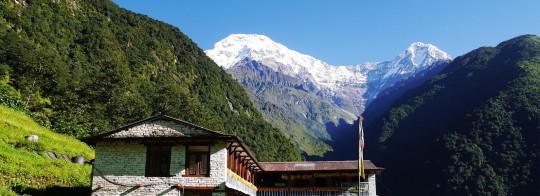
The Annapurna Base Camp Short Trek stands as a testament to Nepal's diverse terrain and breathtaking vistas. Perfect for those with limited time, this trek offers a condensed yet rewarding experience, taking trekkers through lush forests, charming villages, and alpine meadows before culminating at the iconic Annapurna Base Camp. Along the way, trekkers are treated to panoramic views of towering peaks, including the majestic Machapuchare (Fishtail) and Annapurna South, creating memories that will last a lifetime.
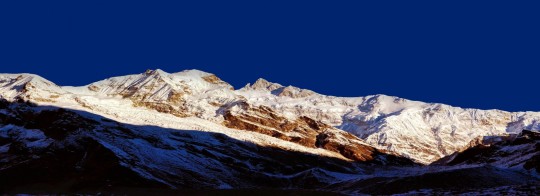
For those seeking a more remote and off-the-beaten-path adventure, the Kanchenjunga Base Camp Trekking beckons with its untouched wilderness and rugged beauty. Located in the far eastern corner of Nepal, this trek offers a glimpse into the rich cultural heritage of the region, as well as stunning views of the world's third-highest peak, Kanchenjunga. With its challenging trails and pristine landscapes, this trek promises an immersive experience that's as rewarding as it is unforgettable.
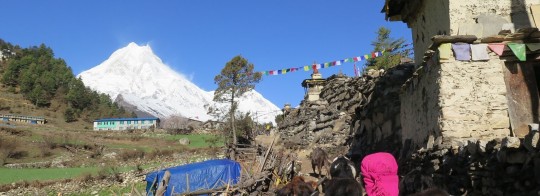
Venturing further off the beaten path, the Tsum Valley and Manaslu Trek provides trekkers with a glimpse into the hidden treasures of Nepal's remote Himalayan regions. Nestled between the towering peaks of the Ganesh Himal and Manaslu ranges, the Tsum Valley is renowned for its ancient monasteries, picturesque villages, and warm hospitality of the local people. Combined with the rugged beauty of the Manaslu Circuit, this trek offers a unique blend of cultural immersion and breathtaking scenery that's sure to captivate adventurers.

Speaking of the Manaslu Circuit Trek, it's a journey that takes trekkers on an epic adventure around the eighth highest mountain in the world, Mount Manaslu. Renowned for its dramatic landscapes, diverse terrain, and rich cultural heritage, this trek offers a challenging yet rewarding experience for those seeking to explore the unspoiled beauty of the Himalayas.
Whether it's the iconic Annapurna Base Camp, the remote wilderness of Kanchenjunga, the hidden treasures of Tsum Valley, or the epic adventure of the Manaslu Circuit, Nepal's diverse trekking options promise an unforgettable journey for adventurers seeking to explore the wonders of the Himalayas.
#Annapurna Base Camp Short Trek#Kanchenjunga Base Camp Trekking#Tsum Valley and Manaslu Trek#Manaslu Circuit Trek
0 notes
Text
Kanchenjunga South Base Camp Trek – A Hidden Gem in the Himalayas

The Kanchenjunga South Base Camp Trek is an extraordinary adventure that takes you deep into the remote eastern Himalayas of Nepal, leading to the foot of the world’s third-highest peak, Kanchenjunga (8,586m). Unlike the more crowded Everest and Annapurna regions, this trek offers a true wilderness experience, taking you through lush forests, traditional mountain villages, and stunning glacier landscapes. If you’re looking for a raw, off-the-beaten-path adventure, this trek is perfect for you.
Why Trek to Kanchenjunga South Base Camp?
Untouched and Remote – Experience one of Nepal’s least-explored trekking routes.
Diverse Landscapes – Trek through rhododendron forests, alpine meadows, and towering glaciers.
Cultural Immersion – Visit traditional villages of Rai, Limbu, and Sherpa communities.
Incredible Mountain Views – Witness panoramic sights of Kanchenjunga, Jannu, and Yalung Glacier.
Less Crowded, More Authentic – Enjoy solitude and pure Himalayan beauty without the crowds.
Best Time to Trek
The best seasons for the Kanchenjunga South Base Camp Trek are spring (March-May) and autumn (September-November), when the weather is stable, and the views are spectacular.
Permits & Regulations
Since Kanchenjunga is a restricted area, trekkers need:
Kanchenjunga Restricted Area Permit (RAP)
Kanchenjunga Conservation Area Permit (KCAP)
A registered guide (mandatory for this region)
Itinerary Overview
Day 1-5: Fly from Kathmandu to Bhadrapur, then drive to Taplejung and begin the trek.
Day 6-9: Trek through lush forests, terraced fields, and Limbu villages toward Tseram.
Day 10-12: Reach Kanchenjunga South Base Camp (4,610m), explore Yalung Glacier, and soak in the majestic views.
Day 13-16: Descend via Phumpe Danda and return to Kathmandu.
Essential Gear
Good-quality trekking boots and warm layers
Sleeping bag (-20°C) for cold nights
Trekking poles and gloves for high-altitude terrain
Sunglasses and sunscreen for sun protection
Final Thoughts
The Kanchenjunga South Base Camp Trek is a true Himalayan gem, offering an unparalleled mix of adventure, culture, and raw natural beauty. The journey through isolated mountain villages, deep valleys, and dramatic glaciers makes this trek a once-in-a-lifetime experience for those seeking a more wild and authentic adventure in Nepal. If you’re looking to explore a less-travelled part of the Himalayas, this trek deserves a spot on your bucket list!
#Kanchenjunga South Base Camp Trek#Trekking Kanchenjunga Nepal#Best time for Kanchenjunga Trek#Kanchenjunga vs Everest Base Camp#Kanchenjunga Trek difficulty
0 notes
Text
Ultimate Kanchenjunga Base Camp Trek

Discover the majestic Kanchenjunga Base Camp Trek, offering a challenging, scenic, and unforgettable trekking experience in Nepal.
For more info: https://www.beyondthelimitstreks.com/kanchenjunga-trek
#KanchenjungaBaseCampTrek
0 notes
Text
Kanchenjunga North Base Camp
Kanchenjunga North Base Camp is a stunning destination in Nepal, offering trekkers breathtaking views of the world’s third-highest peak, Kanchenjunga. This trek typically takes about 12 to 14 days and showcases diverse landscapes, from lush forests to high-altitude meadows. Along the way, trekkers can experience the rich culture of local communities, visit ancient monasteries, and enjoy the hospitality of the region. The journey to the North Base Camp is less crowded, providing a peaceful adventure amidst the majestic Himalayas, making it a perfect choice for those seeking an off-the-beaten-path experience.
0 notes
Text

Kanchenjunga South Base Camp
0 notes
Text
Solo Trekking To Kanchenjunga Base Camp With Adventure Nepal Eco Treks
Get ready to be mesmerized by expansive views, tranquil alpine lakes, and the kind hospitality of trailside villages. Experience both challenge and peace on the Kanchenjunga Base Camp trek with excursion Nepal Eco Treks, whether you are an experienced trekker or this is your first solo excursion. It promises to be an amazing journey. For any further information visit: https://www.nepalecotrekking.com/trip/kanchenjunga-trek
0 notes
Text
The classic Kanchenjunga circuit trek is an adventurous journey through the stunning landscapes of the eastern Himalayas, offering breathtaking views of the world’s third-highest peak, Kanchenjunga. Spanning approximately 20-25 days, the trek takes you through lush forests, charming villages, and diverse ecosystems, while providing a glimpse into the rich culture of the local communities. Trekkers experience challenging terrains, high-altitude passes, and serene glacial lakes, making it a rewarding expedition for nature lovers and adventure seekers alike.
https://www.nepaladventureteam.com/trip/classic-kanchenjunga-circuit-trek
#trekking #himalayas #travelling #nepal #Holidays #kanchenjungacircuittrek #kanchenjunga #travel #mountains #fypシ゚viralシfypシ゚ #nepaladventureteam
0 notes